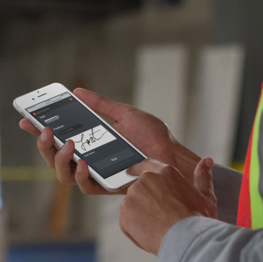
6 Ways to Decrease Incidents & Keep Employees Safe
"How many toolbox talks does OSHA require a company of our size to do a month?” This is a question that many safety directors have asked our Safety Experts over the years. The answer for most companies, technically, is zero. Toolbox talks, safety meetings, tailgate talks (or whatever you want to call them) are not an explicitly required aspect of an “OSHA-approved” safety program. That being said, all organizations have an obligation to protect their employees by training them on the hazards they will encounter in the course of their work and how to perform their job tasks safety. Safety meetings are simply an effective tool that can help companies achieve their goal of reducing costly incidents and keeping their employees safe.
An effective safety program cannot be built on safety meetings alone. But used effectively, safety meetings are an important tool in the toolbelt of an ideal safety program. The primary criteria when evaluating any safety tool should be “does this help keep my employees safe from injury on the job?” Safety meetings help prevent injuries and keep employees safe in a number of ways:
1. Increase Employee Awareness of Hazards & Safe PracticesAn aware employee is a prepared employee. Safety meetings increase overall awareness of hazards that employees may face in the course of their work. The more aware employees are of potential danger and proper safe practices, the more likely they are to avoid a preventable incident.
2. Supplement Formal TrainingTraining may be the most important aspect of an effective safety program. Knowledge is power, and knowledge of surrounding hazards and effective safe practices in the work place is power that could save an employee’s life. That being said, employees have a lot going on and it is to be expected that they may forget something they learned in a training module months ago! Thus, safety meetings can be a great tool to remind employees about certain hazards and safe work practices that they may have previously learned.
3. Increase Vigilance on the JobRegular safety meetings bring safety to the forefront of your employees’ minds. Especially where job tasks can become repetitive, it is easy for an employee to lose focus and accidentally harm themselves or a coworker. Starting a day with a safety meeting means employees are reminded on a regular basis to remain vigilant, avoid hazards, and employ safe practices.
4.Create Open DialogueSafety meetings should not be one-sided lectures from supervisors to employees. Open a dialogue that allows employees to participate in the conversation and you’ll learn more about the current state of your safety program. Are your employees currently following established safe practices? Has an employee identified a safer way to perform a task that can be shared with everyone in the group? Has an employee discovered a hazard that you were previously unaware of? Safety should be a two-way conversation between workers and supervisors.
5. Identify Small Issues Before They Become Serious ProblemsIf there was a minor accident on Monday, a safety meeting on Tuesday morning could serve as a quick and effective way to inform employees of a new hazard, an area they should avoid, or a new safe work practice that can be implemented. Any major issue will require an in-depth investigation that may yield an entirely new work process, but safety meetings can be a temporary fix to avoid additional incidents in the meantime.
6. Validate Safety as Your Organization’s Highest PriorityIs safety really your organization’s top priority or is it just something management pays lip-service to? Priorities are something that are regularly discussed, measured for, and invested in. Safety meetings are a simple way to extend the reach of an organization’s overall safety program by giving safety a constant presence on your worksite through valuable content and open dialogue.
When it comes to implementing safety meetings as an element of your overall safety management program, there are four intangibles to consider: (1) worthwhile content, (2) consistency, (3) documentation, and (4) time commitment.
There are a number of resources online that provide valuable Toolbox Talk content for safety managers and many of them are totally free. As is the case with any safety initiative, consistency is key. You’ll need to choose the frequency of your safety meetings; will they be daily? Weekly? Monthly? If there is safety data from your own program that suggests an increase in incidents towards the end of each week, hold your weekly safety meeting every Thursday morning to improve vigilance around that time and decrease avoidable incidents. Remember to document your efforts so that in the event of an incident or an audit you can verify the steps your organization is taking to keep your employees safe from harm. Finally, keep in mind that you may need to convince management that the time commitment of regular safety meetings is worthwhile. Overall, regular safety meetings are an inexpensive solution that only require an investment of time, but this is still something for management to weigh. Used effectively, the return on this investment is decreased incident costs and improved safety overall.
.png)